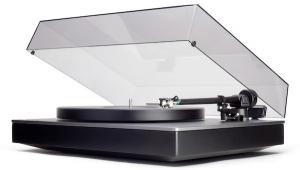It’s always helpful to give credit where credit is due and since there were no comments on this VPI Classic review, I thought I’d add one…..or two …. or so very brief comments.
Turntable: Using the same stereo system for all tests my friend and I tried the VPI Classic 3 against a Clearaudio Innovation (XV-1s/1t), Brinkmann Bardo (Lyra Titan), and a couple other turntables and it really held its’ own. The Classic 3 has great pitch stability and a lively presentation that is rather addictive, making it quite the bargain compared to this stiff competition.
Tonearm: Using the 10.5i unipivot arm we tried a Soundsmith Zephyr and Dynavector 17D3, each around $1k, and the 17D3 was the hands down favorite with a greater amount of detail, dynamics, larger soundstage, and wider frequency range. Moving up to the $5k range with the Benz Micro LP S-MR and Dynavector XV-1s, the Dyna was again the favorite primarily due to the unrestrained dynamics, clear separation around each instrument (wow!), and wonderful musicality.
Options: In the Classic 1 the stainless steel arm tube and Nordost Valhalla wiring options will bring it up to near Classic 3 status, without the on-the-fly adjustable VTA, and are both highly recommended if looking towards the less expensive Classic 1 vs. the more expensive 2/3/4 models. With that said, the center weight and outer edge ring are must haves since they really lock down the soundstage – try it, the difference is pretty amazing. What about the SDS to better control the speed? Using a strobe the VPI is awfully close to dead-on, so the SDS seems more of a like to have than need to have.
We were both surprised the Benz LP S-MR didn’t do as well as the Dyna XV-1s given the recent reviews we’ve read (we each bought an XV-1s after listening), but it really highlights the need to listen and trust your own ears. (At least we can say the Classic/17D3 and Classic/XV-1s sound like great synergistic matches to us.) I suspect the tonearm/cartridge interaction was the key deciding factor here, but maybe the kind Mr. Fremer can shed some light on tonearm/cartridge matching?























































